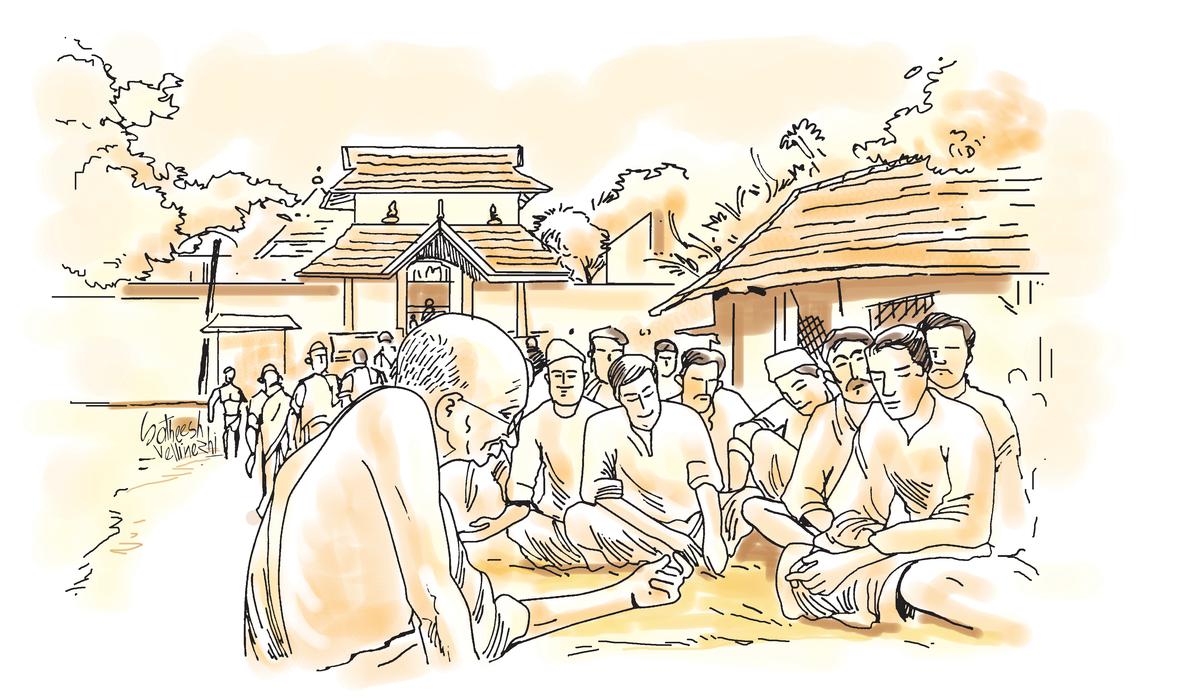News Highlight
Vaikom Satyagraha and the fight for social justice.
Key Takeaway
- The Vaikom temple street entry movement in Kerala has echoed throughout Tamil Nadu.
- The fight has set India on a path of equality and justice.
- In Kerala, the word ‘Vaikom’ conjures images of the writer Vaikom Mohamed Basheer, the vocalist Vaikom Vijayalakshmi, and Vaikathappan, the deity of the Vaikom temple.
- Many Indians associate Vaikom with Mahatma Gandhi, which conjures up Periyar’s name and image in Tamil Nadu.
Vaikom Satyagraha
- Background
- Low-caste Hindus were not permitted to enter temples due to the existing caste system in Kerala and the rest of India.
- They were not even allowed to stroll on the roads leading to the temples in Kerala.
- Kerala was established in 1956; previously, it was divided into Malabar (North Kerala), Cochin, and Travancore.
- T K Madhavan presented a report on the discrimination the depressed caste people faced in Kerala at the Kakinada Congress Party meeting in 1923.
- To combat untouchability, a council of persons from various castes was constituted in Kerala.
- T K Madhavan, Velayudha Menon, K Neelakantan Namboothiri, and TR Krishnaswami Iyer served on the committee, which K Kelappan led.
- About
- On March 30, 1924, the Vaikom movement began.
- The board refused access to lower caste persons (Avarnas) at Vaikom Mahadeva Temple.
- The Satyagrahis formed groups of three people and entered the shrine.
- The local police refused and arrested them.
- The movement was backed by Gandhi, Sree Narayana Guru, and Chattampi Swamikal.
- The movement gained recognition throughout India, and support came from all over.
- Punjab’s Akalis helped by constructing kitchens to feed the Satyagrahis.
- Even Muslim and Christian leaders backed the effort.
- On the other hand, Gandhi was dissatisfied since he wanted the movement to be an intra-Hindu affair.
- In April 1924, the movement was momentarily halted at Gandhi’s urging.
- Following the failure of consultations with Hindus, the leaders relaunched the initiative.
- K P Kesava Menon and T K Madhavan, the leaders, were detained.
- E V Ramaswami Naicker travelled from Tamil Nadu to support the cause.
- He was also detained.
- On October 1, 1924, a group of upper caste Savarnas marched forward during a procession.
- As well as presented a petition with over 25000 signatures to the Regent Maharani Sethu Lakshmi Bai of Travancore, requesting that everyone enter the shrine.
- Gandhi visited with the Regent Maharani as well.
Effect and Significance of Vaikom Satyagraha
- Except for the eastern gate, all of the temple’s gates were opened to Hindus on November 23, 1925.
- Backward castes were granted permission to travel on public roadways near all temples in Travancore in 1928.
- This was the first time in Kerala that an organised effort for the fundamental rights of untouchables.
- In addition, other backward castes were carried out on a large scale.
- It became India’s principal human rights struggle.
- It became a trial ground for effective approaches such as Satyagrahas.
- It instilled rationality in the masses.
Gandhi on Caste System
- The Gandhian approach to caste discrimination was reformative.
- Gandhi supported the old Hindu division of society into four varnas.
- For him, the Varna system reflects dharma and hence the division of labour, which is essential for the smooth operation of a strong and moral community.
- Gandhian socialism is primarily based on Gandhi’s Hind Swaraj or Indian self-government.
- Mahatma Gandhi had a vital influence on the emancipation of women in India by inspiring and motivating them to join the struggle.
- Gandhi desired a united India free of religious and ethnic persecution.
Centenary Celebrations of Vaikom Satyagraha
- The 603-day-long Vaikom Satyagraha was critical in proclaiming modernity in the state and serving as a trial ground for nonviolent protests in Kerala.
- The centenary commemoration of the Vaikom Satyagraha will commence on April 1, 2023.
- Kerala Chief Minister and Tamil Nadu Chief Minister inaugurated the event in Kottayam.
- Periyar, the Father of the Dravidian Movement, took part in the Vaikom Satyagraha and was at the forefront of the movement for its whole duration.
- He became known as ‘Vaikom Veerar,’ the Vaikom hero for his contributions.
Pic Courtesy: The Hindu
Content Source: The Hindu



